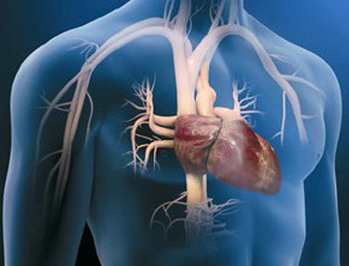Few days ago I read an encouraging news, on the Internet.
The own blood cells of patients, who have suffered a myocardial infarction, are able to restore the damaged heart tissue, according to the findings of a study, conducted by researchers from the Universities of Granada, Jaén, Málaga, Miami and the “University Hospital Virgin Victory” of Málaga.

Specifically, it is called Endothelial Progenitor Cells (EPC), those who are destined to become blood vessels, but scientists have managed to differentiate into heart muscle cells (cardiomyocytes).
This ability to change their function, because they are in an initial phase, in which the cells are not mature and therefore they have plasticity, that is, they can be redirected to become cardiac tissue, collected by SINC (Information Service and Scientific News).
"Until now, we knew the beneficial role of EPC, in these pathologies, where the diameter of blood vessels and ischemic heart disease and peripheral arterial disease are reduced. However, little was known about its potential to restore damaged tissue in heart”, said the leader of the project, at the University of Granada, Juan Antonio Marchal.
To clarify its role, scientists analyzed in vitro the ability to become heart cells of EPC samples, isolated from blood of patients with acute myocardial infarction.
They were compared with EPC obtained from umbilical cord blood, a source which is already known that there are stem cells, capable of regenerating cardiac tissue.
"It is the first time that this comparison is developed. Our data indicate that Endothelial Progenitor Cells (EPCs), derived from both sources, patient blood and umbilical cord, have plasticity and similar functions and suggest a potential therapeutic efficacy, in cardiac cell therapy”, as the researcher asserted.
This therapy should consist in inject these cells into the site of injury. "After a heart attack, call effect by these EPC occurs, from the bone marrow, where they are normally found, to the heart, to repair the injury: it is the “homing” effect. However, this mechanism can not move enough cells to completely regenerate damaged tissue”, he explains.
Therefore, the future therapy, proposed by experts, should help patients, with the regeneration process. Moreover, as they are own cells, possible rejections are avoided.
"The injection of cells already done, but we have shown the ability of these infarcted patient's own cells, hence no side-effects are produced", he says.
"However, it is necessary to develop expansion protocols of these cells, from the patient, in the laboratory, so that we can get an adequate number, that had the beneficial effect, once introduced into patients", he says.
To reach their conclusions, published in the journal Cytotherapy, the researchers first isolated endothelial progenitor cells, throughout the existing set of blood cells: white blood cells, red ones, etc.
Once separated, the EPC is allowed to proliferate and add a substance, the 5-azacytidine, which has the capacity to induce them to heart cells, like cells from umbilical cord.
"No significant differences, between the number of colony forming units of endothelial cells, in peripheral blood of patients with myocardial infarction, and umbilical cord samples were observed", concluded the researcher of the UGR.
These results, which will be then transferred to animal testing in live, are the result of the excellence project 'BIOMER CONDROSTEM 3-D: regenerative biomedicine chondral pathology, using autologous stem cells' funded by the Ministry of Economy, Innovation, Science and Employment.
Well, I find it interesting this progress, provided that a good use of stem cells is made.
Until my next blog post, kind regards,
Luis.
Sponsored by Costaluz Lawyers.
Please click below:
